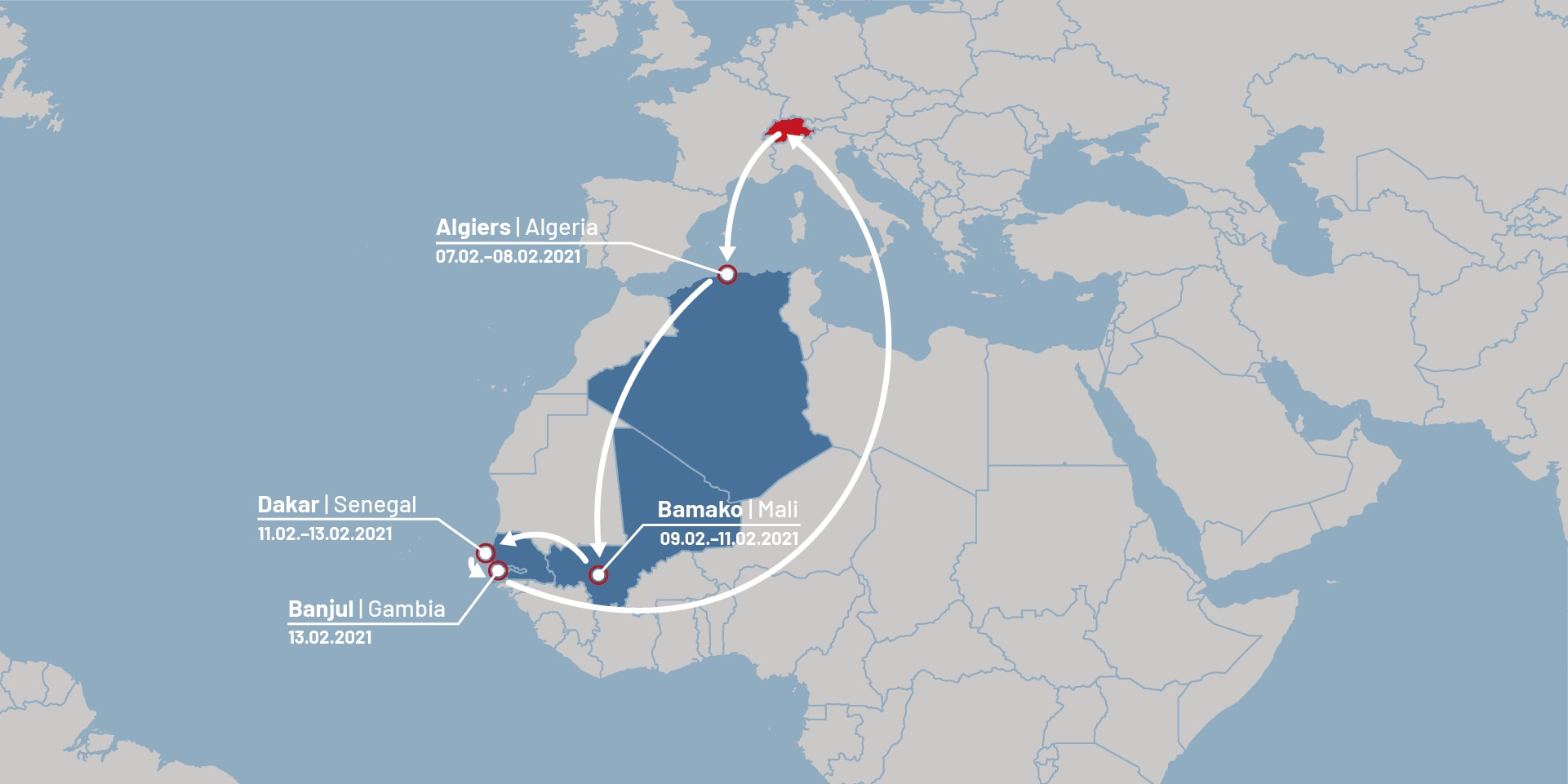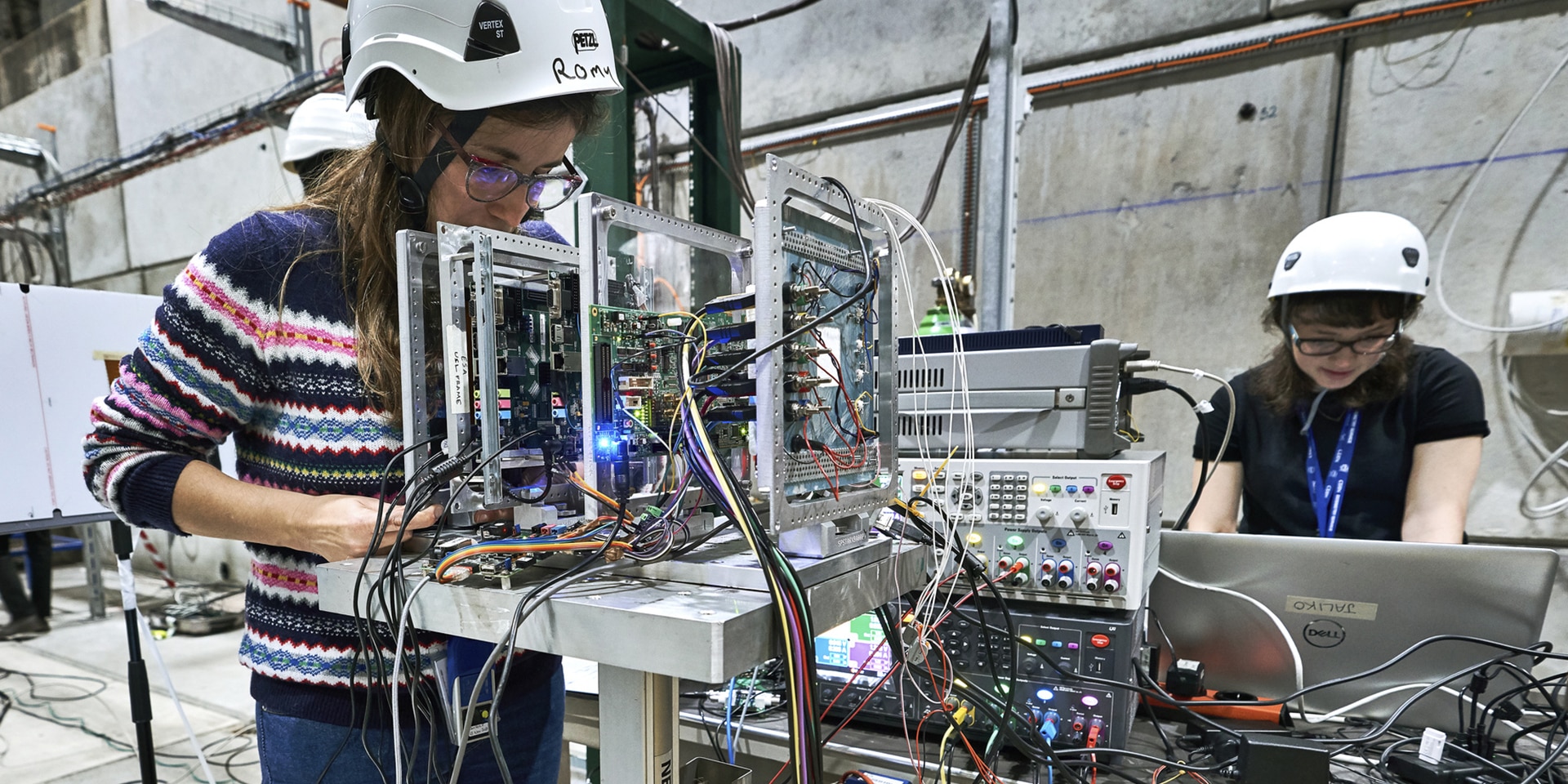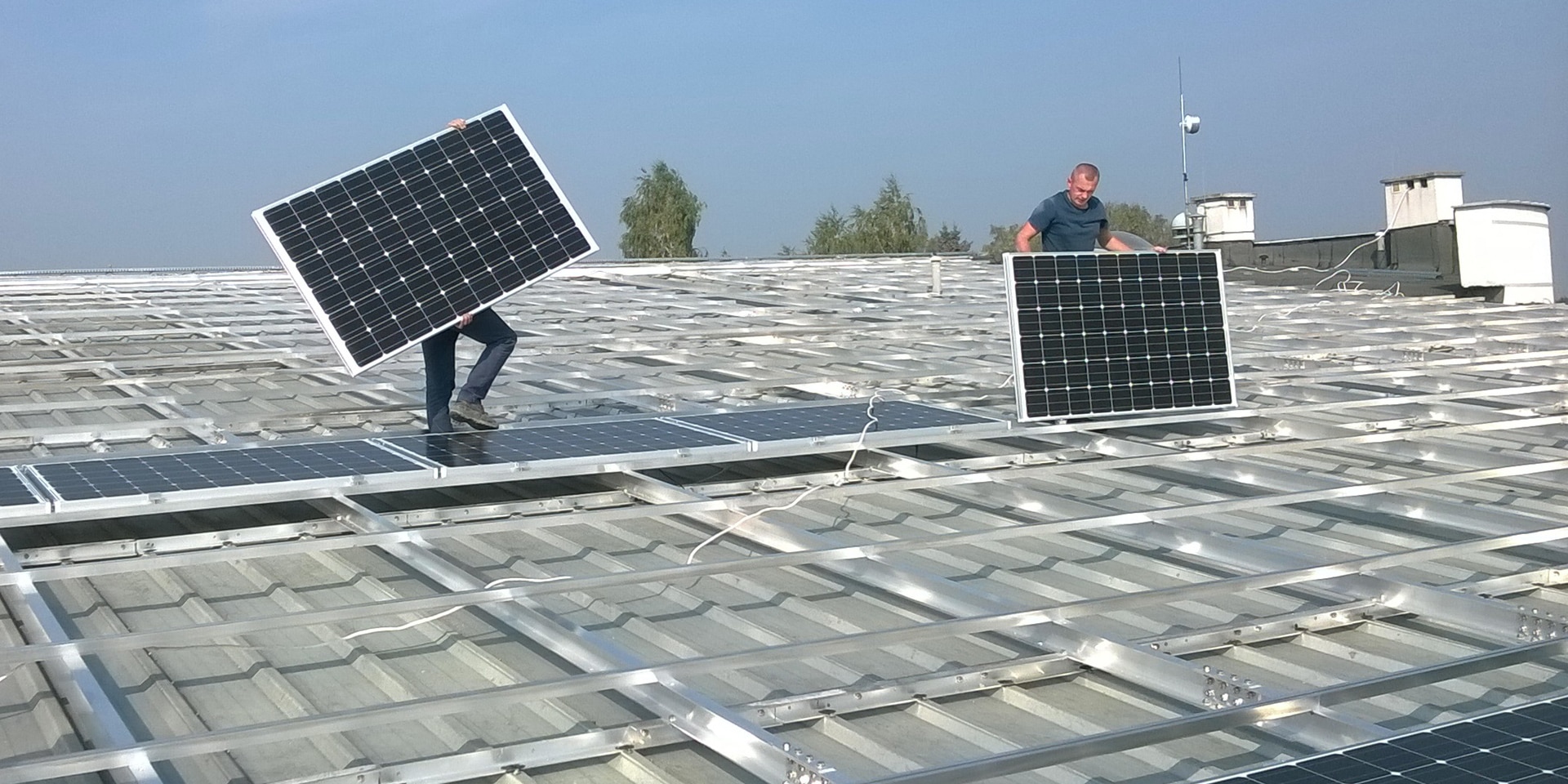Science diplomacy as an agent for peace
The establishment of CERN in Geneva in 1954 played its own part in the reconstruction of post-Second World War Europe. The man behind the initiative was Professor Herwig Schopper. Now, at the age of 97, this wise man is still a champion of peace and scientific development and is working on the creation of new institutes in different strategic regions of the world.
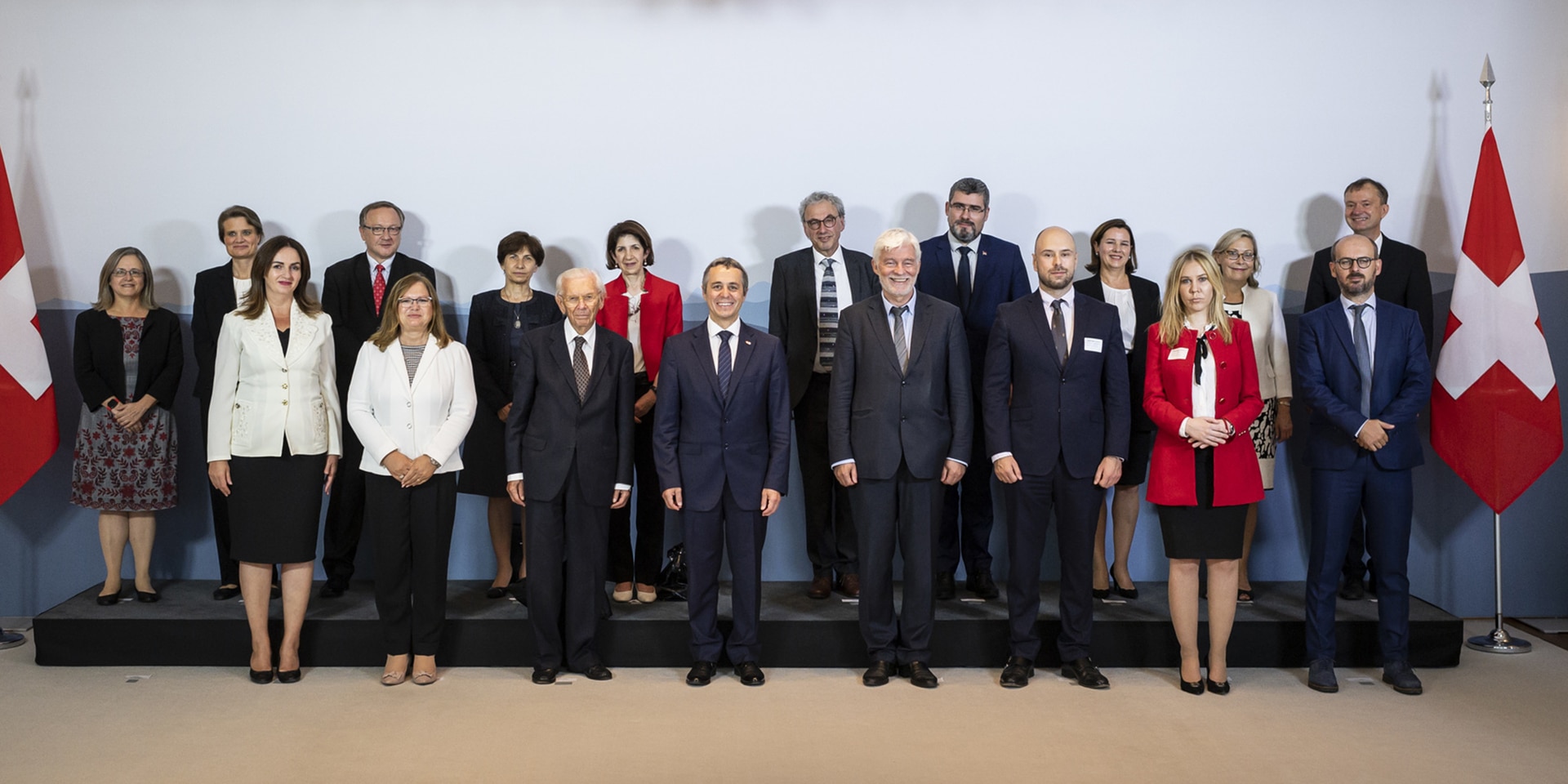
Federal Councillor Ignazio Cassis with the participants of the conference on the SEEIIST project. © Keystone
At its inception in 1954, CERN was the embryo of a project that aimed to bring Europe and the world together again through scientific research in the post-Second World War period. Nearly 70 years on, this intergovernmental organisation is in the vanguard of cutting edge collaboration between experts from around the world in the service of scientific excellence.
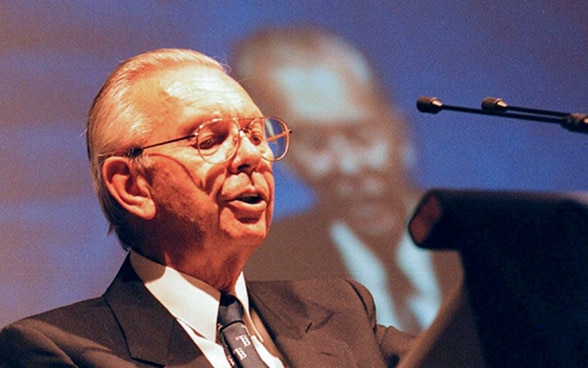
It is in part thanks to CERN that Geneva has built its reputation as a platform for international exchange. It was never a question of where the new nuclear scientists came from, but of understanding their approach to scientific development, at the same time fostering a climate of peace in the rebuilding of Europe.
Professor Schopper's vocation – to use science diplomacy as an agent for peace – is still going strong. At the age of 97, he is still examining possibilities for setting up similar projects in strategic regions of the world. In May 2017, the SESAME project – the CERN of the Middle East – opened in Jordan after long years of discussion. Currently, work is under way to look into the possibility of replicating a similar project in south-eastern Europe.
SEEIIST – bringing science diplomacy to the Balkans
The South East European International Institute for Sustainable Technologies (SEEIIST) is a project to create a new science and technology research centre at the heart of south-eastern Europe. The centre aims not only to be a vehicle for biomedical and nuclear research specialising in the development of advanced technology for the treatment of certain types of cancer, but also a beacon for technological development in a strategic region of the continent.
As was the case when CERN was established in Geneva in 1954, the project intends to bring together the most experienced scientists from across the Balkans and south-eastern Europe under one roof. Such an institute would promote dialogue between specialists from different countries who would otherwise not have the opportunity to do so.
Developing cancer treatments through new technologies
The government of Montenegro was the first to lend its political support to SEEIIST in March 2017, following which a declaration of intent was signed at CERN in October 2017, establishing SEEIIST as a joint regional initiative, including – in addition to Montenegro – Albania, Bosnia and Herzegovina, Bulgaria, Republic of Kosovo, North Macedonia, Serbia and Slovenia. Croatia and Greece joined the project as observers.
The creation of a centre for the treatment of cancers using hadron therapy technology – currently not widely used in the region – is one of the main missions of SEEIIST. It makes it possible to treat cancers that are surgically inoperable or resistant to traditional radiotherapy treatments, by using a beam of particles called hadrons, which include carbon ions and protons.
SEEIIST aims to become a centre of scientific excellence and a beacon for international and regional collaboration. Sustainable development, as well as development in education, technology transfer, digital networks and big data processing are all key in this regard. However, a number of points still need to be defined.
Preparatory meeting in Switzerland
Switzerland agreed to a request from SEEIIST's Steering Committee to organise a high-level meeting bringing together the various political leaders of the region and other important actors (notably CERN and the Paul Scherrer Institute). The aim of the meeting is to facilitate the creation of this centre of excellence for scientific research, to agree on the location of the site and the centre's legal form.
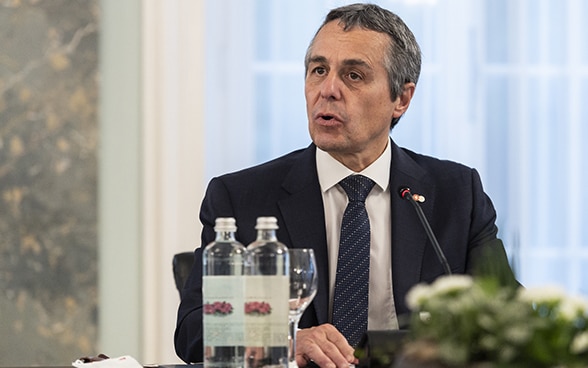
On 13 September 2021, Switzerland received the ministers and state representatives of the countries concerned for preparatory talks. Delegates were welcomed by Federal Councillor Ignazio Cassis, who took part in the event.
Professors Herwig Schopper (honorary member of SEEIIST) and Leandar Litov (Bulgarian president of SEEIIST's Steering Committee) took part in the discussions alongside State Secretary Martina Hirayama (SERI), the special representative for science diplomacy, Ambassador Alexandre Fasel; Ambassador Stefan Estermann; the director general of CERN, Fabiola Gianotti; and Professor Leonid Rivkin, deputy director of the Paul Scherrer Institute.
Science diplomacy is a key part of Switzerland's foreign policy strategy
By supporting the dialogue to create the SEEIIST facility, Switzerland is using science diplomacy to pursue its foreign policy goals. This is also the kind of project which the Federal Council seeks to encourage through its Foreign Policy Strategy 2020–23.

